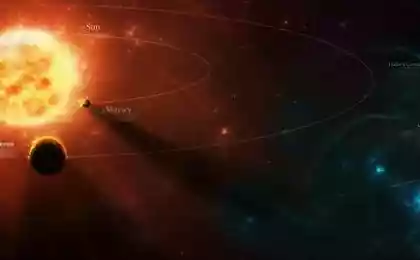532
Colonization of other planets: myths and reality
Fourteen million twenty two thousand six hundred forty eight
In science fiction movies and books, the colonization of other planets seems simple. All you need is to jump into "hyperspace" in your star cruiser and -- voilà -- you punch folded space-time, and instantly arrive at your destination. In fact, we are going to colonize space is not large jumps and a series of small steps, starting with a successful stay in low-earth orbit.
Today it is hard to imagine, but in the first days after the launch of Sputnik, scientists did not even know that people can survive for long periods of time in space. The first flight into space was carried out by animals, not astronauts, and only in 1961, Yuri Gagarin flew to the flaming rocket into space. The historic Gagarin's flight lasted only 108 minutes, but laid the Foundation for longer missions.
By the mid 1970-ies, the astronauts successfully settled in orbital space stations. The first Salyut and Skylab, and then there was "Peace". At the station "Mir" cosmonauts continued to break records stay in space. Musa Manarov and Vladimir Titov spent a year aboard the Soviet station in the late 80-ies, and in 1995, Valery Polyakov overcame their record, having completed a 438-day tour in space.
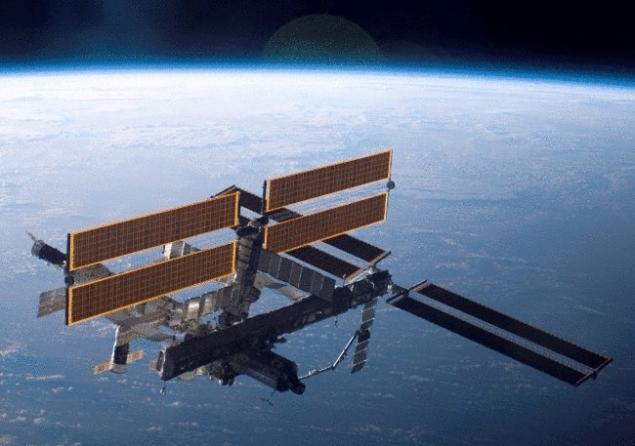
Today, the international space station (ISS) stands as clear evidence that people are able to live indefinitely in low-earth orbit. Since then, as the first ISS crew arrived at the station in 2000, the ISS became a permanent base for experimentation, space surveillance, and in General the life of cosmonauts and astronauts in space.
From low-earth orbit, we just need to make the jump and reach the moon (relatively speaking). She should be our next destination. Should, but may not be.
The exploration of the moon Since the Apollo program put the moon within our reach, creating a base on the moon seemed the next logical step. Earth's natural satellite has a number of advantages compared to more exotic moons like Titan, moon of Saturn. First, it is relatively close, so that crews can be replaced within a few days. It also involves good communication between the colonists and the commanders of the mission on Earth, that is, without significant delay. The moon would be an ideal spaceport, because the rocket could leave its low gravity without any expenditure of energy. Finally, the lunar Observatory greatly facilitate the study of the Universe and search for places where I could go in the future.
However, life on the moon will be difficult. In the absence of atmosphere, you can add significant changes in temperature, 134 degrees centigrade at noon to minus 170 degrees Celsius at night. The moon is constantly polished by micrometeorites and cosmic rays. To survive, the colonists will have to equip their homes under the lunar soil, or lunar craters.
There are also issues regarding food and water. Scientists know that the moon has quite a lot of water, but need a special device to remove it. And the cultivation of plants during the long lunar nights, not having insects for pollination, it would be very difficult.
Despite these difficulties, some countries are developing opportunities for exploration of the moon. Not so long ago it became known about plans of Russia to establish a lunar base. Also in 2010, was suspended the American Constellation program, in which the moon was supposed to go spacecraft for a new generation. In any case, we can say that public attention has now turned mostly to Mars.
The Colonization Of Mars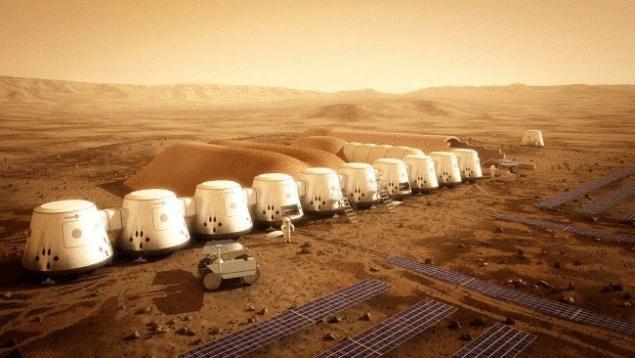
Some scientists think we should skip the moon and go straight to Mars. One of the most ardent supporters of this strategy is Robert Zubrin, founder and President of the Mars Society. In 1996, he outlined the details of a Mars Direct mission, which can be called a model plan for manned trips to Mars.
Here's how it will look. The first launch will include unmanned Earth Return Vehicle, or ERV, which will go to Mars. ERV should be equipped with a nuclear reactor which can produce fuel using elements of the Martian atmosphere. Two years later, will be launched the second unmanned ERV, which will go to a new place to land. At the same time will be sent manned spacecraft, which will land near the first ERV. The crew will stay on Mars for 18 months, exploring the planet and conducting experiments until the time comes to return to Earth using fuel produced directly on Mars. After the first command will go to the Earth, will arrive the second group of researchers, and the whole process repeated.
Long-term residence in the Martian colonies, however, will require the transformation of the world, the so-called terraforming. Terraforming includes temperature rise on Mars to earth conditions. The only realistic way to do this is to build blocks of soil treatment that will pump up sverhpredelna gases like methane and ammonia in the Martian atmosphere. These gases would absorb solar energy and warm the planet, triggering the release of carbon dioxide from the soil and polar ice caps. As carbon dioxide will increase in the atmosphere, the pressure will fall, providing extra warmth and formation of the oceans. In the end, the colonists begin to do without spacesuits, although will have to wear oxygen tanks.
After several decades of terraforming, the Red planet will appear nearly the same as our own. A couple of decades later she would be virtually indistinguishable from Earth. If this happens, Mars could become a second home for people.
Colony outside of Mars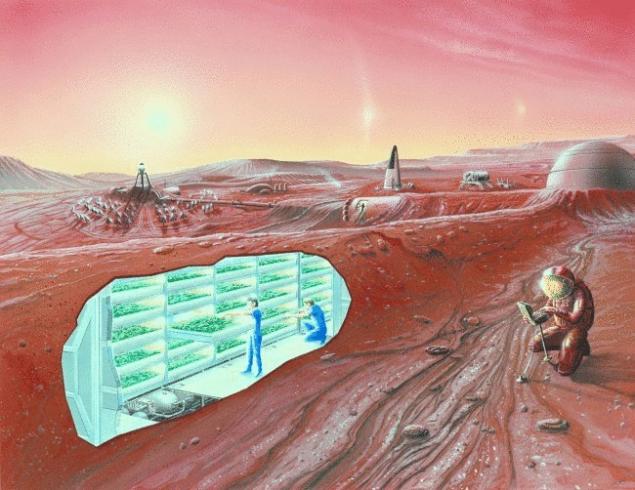
The asteroid these are rocky objects that orbit the Sun in a wide band between Mars and Jupiter — could be a stepping stone to the outer planets. There is only about a hundred asteroids with a width of more than 200 kilometers, but their total number exceeds billions, and it is a good resource for use in the Solar system. Among the largest asteroids Ceres reigns (or dwarf planet, how you look at it), and after careful research it may well become an option for the Outpost. On the one hand, the existence of liquid water under its surface can be decisive.
How people can colonize an asteroid? One option is to turn it into a city. This will require substantial efforts "gouging" of the innards of this stone. Another option is to build a "city in the sky" space station, which will orbit the asteroid. This idea is in the air for many years.
In 1975, a group of professors, technical Directors and students gathered for 10 weeks at Stanford University and research center Ames to develop a project on space settlement. They proposed to create coleoptere housing with a diameter of 1.6 kilometers. The colonists lived in the pipe around the perimeter of the wheel, which was mixed with six "spokes" with the Central dock. The whole structure would rotate, simulating the gravity of Earth, and with the help of mirrors gather sunlight for use in power generation and agriculture.
In any case, now actively considering options with the development of Mars. However, not all of them look equally attractive. Are you ready to lead a journey beyond the Solar system?
A course for the planet in another system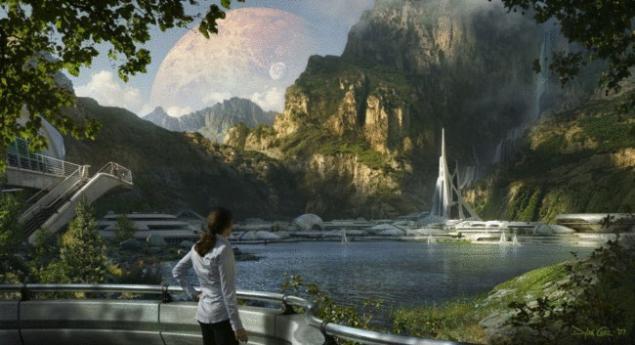
If we're going to colonize a planet in another star system, we need to answer two questions. First, is there a suitable planet for our species beyond our Solar system? Answer: of course, Yes. The Kepler telescope has found hundreds of planets that can suit everyone.
The second question is purely logistical: how to get to planets located trillions of miles away from us? To answer this question, we need to rethink space travel. Perhaps spend a few revolutions in the field of space exploration. For example, the idea that one crew will fly to a distant planet to be highly questionable. Rather, you will need a "generation ship", which will have to be born and die several generations of people.
Maybe we can find a wormhole or be able to change the engine on the Casimir effect. There are more realistic options like solar sails. Ion thrusters use solar panels to produce an electric field that accelerates charged atoms of xenon. This engine is currently supplying power to the mission of the Dawn probe, exploring Ceres. Missiles on the antimatter can be extremely effective and to reach high speeds, but this technology is still rather hypothetical.
In the end, a good solution may be a combination of all these technologies. And it proves once again that the exploration of deep space will require cooperation and collaboration between scientists from different countries and genres. Anyway, the space combines.published
Source: hi-news.ru
In science fiction movies and books, the colonization of other planets seems simple. All you need is to jump into "hyperspace" in your star cruiser and -- voilà -- you punch folded space-time, and instantly arrive at your destination. In fact, we are going to colonize space is not large jumps and a series of small steps, starting with a successful stay in low-earth orbit.
Today it is hard to imagine, but in the first days after the launch of Sputnik, scientists did not even know that people can survive for long periods of time in space. The first flight into space was carried out by animals, not astronauts, and only in 1961, Yuri Gagarin flew to the flaming rocket into space. The historic Gagarin's flight lasted only 108 minutes, but laid the Foundation for longer missions.
By the mid 1970-ies, the astronauts successfully settled in orbital space stations. The first Salyut and Skylab, and then there was "Peace". At the station "Mir" cosmonauts continued to break records stay in space. Musa Manarov and Vladimir Titov spent a year aboard the Soviet station in the late 80-ies, and in 1995, Valery Polyakov overcame their record, having completed a 438-day tour in space.

Today, the international space station (ISS) stands as clear evidence that people are able to live indefinitely in low-earth orbit. Since then, as the first ISS crew arrived at the station in 2000, the ISS became a permanent base for experimentation, space surveillance, and in General the life of cosmonauts and astronauts in space.
From low-earth orbit, we just need to make the jump and reach the moon (relatively speaking). She should be our next destination. Should, but may not be.
The exploration of the moon Since the Apollo program put the moon within our reach, creating a base on the moon seemed the next logical step. Earth's natural satellite has a number of advantages compared to more exotic moons like Titan, moon of Saturn. First, it is relatively close, so that crews can be replaced within a few days. It also involves good communication between the colonists and the commanders of the mission on Earth, that is, without significant delay. The moon would be an ideal spaceport, because the rocket could leave its low gravity without any expenditure of energy. Finally, the lunar Observatory greatly facilitate the study of the Universe and search for places where I could go in the future.
However, life on the moon will be difficult. In the absence of atmosphere, you can add significant changes in temperature, 134 degrees centigrade at noon to minus 170 degrees Celsius at night. The moon is constantly polished by micrometeorites and cosmic rays. To survive, the colonists will have to equip their homes under the lunar soil, or lunar craters.
There are also issues regarding food and water. Scientists know that the moon has quite a lot of water, but need a special device to remove it. And the cultivation of plants during the long lunar nights, not having insects for pollination, it would be very difficult.
Despite these difficulties, some countries are developing opportunities for exploration of the moon. Not so long ago it became known about plans of Russia to establish a lunar base. Also in 2010, was suspended the American Constellation program, in which the moon was supposed to go spacecraft for a new generation. In any case, we can say that public attention has now turned mostly to Mars.
The Colonization Of Mars

Some scientists think we should skip the moon and go straight to Mars. One of the most ardent supporters of this strategy is Robert Zubrin, founder and President of the Mars Society. In 1996, he outlined the details of a Mars Direct mission, which can be called a model plan for manned trips to Mars.
Here's how it will look. The first launch will include unmanned Earth Return Vehicle, or ERV, which will go to Mars. ERV should be equipped with a nuclear reactor which can produce fuel using elements of the Martian atmosphere. Two years later, will be launched the second unmanned ERV, which will go to a new place to land. At the same time will be sent manned spacecraft, which will land near the first ERV. The crew will stay on Mars for 18 months, exploring the planet and conducting experiments until the time comes to return to Earth using fuel produced directly on Mars. After the first command will go to the Earth, will arrive the second group of researchers, and the whole process repeated.
Long-term residence in the Martian colonies, however, will require the transformation of the world, the so-called terraforming. Terraforming includes temperature rise on Mars to earth conditions. The only realistic way to do this is to build blocks of soil treatment that will pump up sverhpredelna gases like methane and ammonia in the Martian atmosphere. These gases would absorb solar energy and warm the planet, triggering the release of carbon dioxide from the soil and polar ice caps. As carbon dioxide will increase in the atmosphere, the pressure will fall, providing extra warmth and formation of the oceans. In the end, the colonists begin to do without spacesuits, although will have to wear oxygen tanks.
After several decades of terraforming, the Red planet will appear nearly the same as our own. A couple of decades later she would be virtually indistinguishable from Earth. If this happens, Mars could become a second home for people.
Colony outside of Mars

The asteroid these are rocky objects that orbit the Sun in a wide band between Mars and Jupiter — could be a stepping stone to the outer planets. There is only about a hundred asteroids with a width of more than 200 kilometers, but their total number exceeds billions, and it is a good resource for use in the Solar system. Among the largest asteroids Ceres reigns (or dwarf planet, how you look at it), and after careful research it may well become an option for the Outpost. On the one hand, the existence of liquid water under its surface can be decisive.
How people can colonize an asteroid? One option is to turn it into a city. This will require substantial efforts "gouging" of the innards of this stone. Another option is to build a "city in the sky" space station, which will orbit the asteroid. This idea is in the air for many years.
In 1975, a group of professors, technical Directors and students gathered for 10 weeks at Stanford University and research center Ames to develop a project on space settlement. They proposed to create coleoptere housing with a diameter of 1.6 kilometers. The colonists lived in the pipe around the perimeter of the wheel, which was mixed with six "spokes" with the Central dock. The whole structure would rotate, simulating the gravity of Earth, and with the help of mirrors gather sunlight for use in power generation and agriculture.
In any case, now actively considering options with the development of Mars. However, not all of them look equally attractive. Are you ready to lead a journey beyond the Solar system?
A course for the planet in another system

If we're going to colonize a planet in another star system, we need to answer two questions. First, is there a suitable planet for our species beyond our Solar system? Answer: of course, Yes. The Kepler telescope has found hundreds of planets that can suit everyone.
The second question is purely logistical: how to get to planets located trillions of miles away from us? To answer this question, we need to rethink space travel. Perhaps spend a few revolutions in the field of space exploration. For example, the idea that one crew will fly to a distant planet to be highly questionable. Rather, you will need a "generation ship", which will have to be born and die several generations of people.
Maybe we can find a wormhole or be able to change the engine on the Casimir effect. There are more realistic options like solar sails. Ion thrusters use solar panels to produce an electric field that accelerates charged atoms of xenon. This engine is currently supplying power to the mission of the Dawn probe, exploring Ceres. Missiles on the antimatter can be extremely effective and to reach high speeds, but this technology is still rather hypothetical.
In the end, a good solution may be a combination of all these technologies. And it proves once again that the exploration of deep space will require cooperation and collaboration between scientists from different countries and genres. Anyway, the space combines.published
Source: hi-news.ru



















